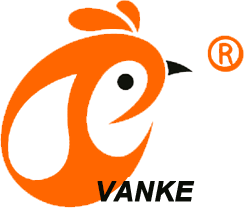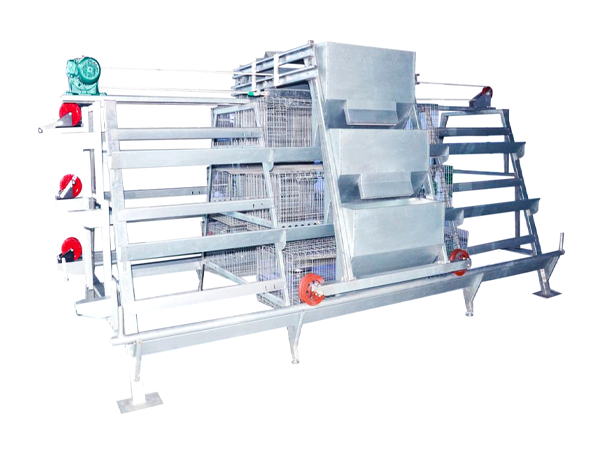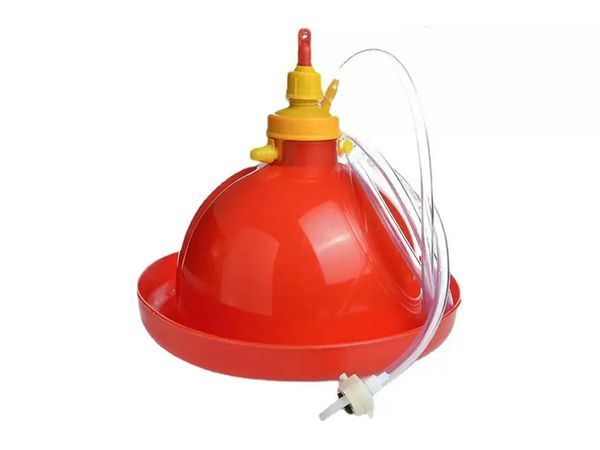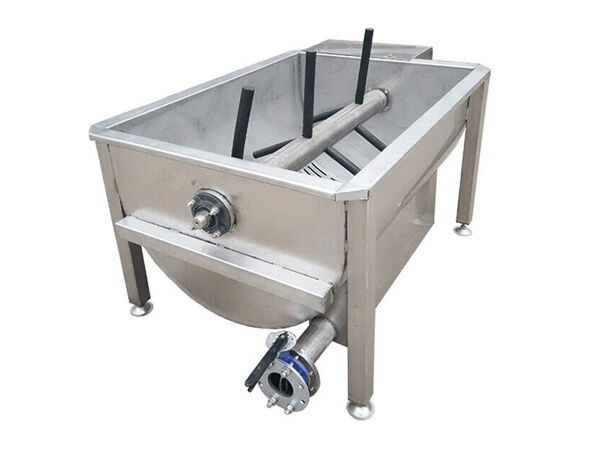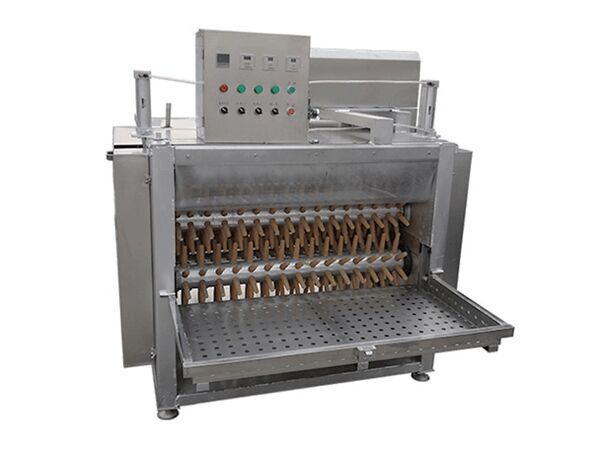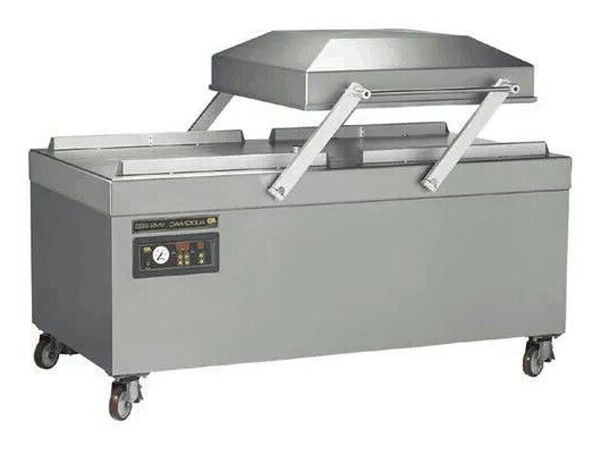
Basic information
For the time past so many poultry farmers have allowed their chickens to forage and occasionally tossed them some food scraps. But the industrial revolution changed that part of living for the chickens. When we say “pelletizing”, we refer to the process of compressing materials through a die to form a cylindrical shape with a length that is generally 2–4 times its diameter
Our pelletizing machine can help make pellets by pressing a feed mixture through a circular hole in a piece of metal. If you drill a hole in a piece of metal, put some feed on it, then drive over it with your car, you would make a pellet. If you drill many holes, you can make many pellets. If you drill the holes in a circle, put the wheel on a shaft enabling it to drive around, and continuously place meal in front of the rolling wheel, and then you would create the flat die press
This may impact the quality of the pellet and cause the press to wear unevenly. To improve the process, form the die into a ring with the roller set inside it. Initially, the roller was powered, and the ring just coasted underneath it. This technology was similar to the flat die, except now both the roller and the die were moving, leading to a more positive extrusion. Today, the ring die is the driving power and the roller(s) coast inside

Production description
Plate mould pellet machine is a newly developmental energy saving equipment, a type of mill or machine press used to produce pellets from powdered material. Pellet fuel is convenient in the process of manufacturing, packing, storing and transporting of feed as a clean renewable energy
Plate mould pellet machine is compact and beautiful, concludes feeder, electrical control cabinet, motor, foundation bed, upper box body, adjusting nut, outlet, spindle box, gear box, transmission shaft. Complete feed pellet line includes feed hammer mill, feed mixer, feed pellet machine, cooling machine, packing system. it can make all kinds of animal feed pellet. Usually for poultry feed, cattle, cow and sheep
The plate mould pellet machine also named as poultry feed pellet machine, it enables you to make feed material into pellets easily. Generally, the diameter of pellets produced will be between 2 and 10 mm. Pellets make ideal fodder for chickens, turkeys, rabbits, ostriches, and even fish
Plate mould pellet machine is widely used for maize straw, peanut shell, rice husk, corncob, cotton seed hull, wheat-straw, sunflower seed shell, sawdust, cotton stalk, weeds, etc. And this equipment is also suitable for raw materials which are difficult to form with low bonding ratio
We are always happy to support our customers and partners with technical questions, products you may want to learn more, click the name to visit
1. Automatic battery cage for pullet, brooder, layer, chicken parents and broiler
2. Chicken feed mill, manure drying machine and egg collection
3. Deep litter plasson drinker, feeder and broiler slaughtering equipment
4. Other poultry farm equipment...
Bookmark our website and contact us now to making enquiry, visiting to our office and factory and checking the sample...
Specifications
Model is QK-ZL001-QK-ZL006
Size is 63x27x75cm-130x51x121cm
Capacity is 80-100kg/h-500-7000kg/h
Weight is 35kg-400kg
Power is 220v/380
Features
1. Table performance, low energy consumption
2. It is convenient repairing and maintenance
3. It has low failure rate, easy operation
4. It has high pellet forming rate
5. Pellet with high density
6. The length of pellets can adjust by change cutter's position
7. Widely use to press fuel, feed and fertilizer pellets
8. The flat die pellet machine is a tried and tested machine and has been in operation for over a decade. The simple design means there is no complicated control panels or fancy design
9. It can process the oil cake and other mixed waste material to granule at one time. And it is columned granule Feed and have slippery firm
10. The production line structure can be customized according to the workshop conditions
11. Avoid waste of raw materials, improve production efficiency, and save labor costs
12. Improve feeding efficiency and save time costs
Application
1. Plate mould pellet machine is widely used for maize straw, peanut shell, rice husk, corncob, cotton seed hull, wheat straw, sunflower seed shell, sawdust, cotton stalk and weeds
2. This equipment is also suitable for raw materials which are difficult to form with low bonding ratio
3. Furthermore, organic bacterial manure, organic fertilizer and compound fertilizer are applicable to process under low temperature
Working procedures
1. Crushing process
The raw materials in the pulverized silo are fed into a pulverizer to be pulverized into powdery raw materials, and then distributed to each batching bin by a conveyor according to the raw material type, and the main equipment is a pulverizer. The purpose of the comminution is to increase the specific surface area of the feed and to improve the utilization of the feed by the animal. Increasing the contact area of digestive enzymes with raw materials, reducing the chewing energy consumption of the animal feeding process, is conducive to improving the feed harvester, and the pulverized raw materials are easily matured in the granulation and tempering stage, and the pulverized feed can be large in the granulation process. The reduction in power consumption can improve the quality and efficiency of subsequent processes
2. Mixing process
the process of uniformly mixing the ingredients of the batching scale, the core equipment is the mixer, the good mixer can mix the feed evenly in a short time, and the poor mixing opportunity leads to the deterioration of the product quality. Ultimately affect the feeding effect. Mixing should be controlled well, the uniformity is gradually reached the best uniformity with the increase of mixing time, but after mixing evenly and then prolonging the mixing time, the delamination of raw materials will occur. Feeding sequence of the mixer: the raw materials in the formula are added first, then the trace elements are added, the particle size is increased first, and then the particle size is small, the specific gravity is small, and the addition ratio is large, try to avoid delamination
The reason why the chicken material is easy to stratify) The particle size of each raw material in the mixture is close to each other, and the addition of the oil and fat can reduce the delamination of the raw material. Avoid over-mixing, release the product before the optimal mixing time, in order to complete the mixing during transportation, and add anti-layering equipment to the mixing process to minimize the storage time of the product in the silo
3. Granulation process
The mixed powdery feed is processed into pelletized feed. Feed granulation is easy to digest. During the granulation process, the raw materials of the granules must be stirred for a period of time by a suitable amount of water at a high temperature. The raw materials of the granules are ripened and softened and bonded, and the mechanical energy generated during granulation can increase the raw materials. The degree of damage is easier to digest. If the feed is easier to digest, the animal can absorb its nutrients more quickly and the "meat ratio" will be lower. The taste is good and the taste is good. The pellets have a good scent. The granulation process can also spray other materials on the surface of the granules. The taste is better and the nutrients are more uniform: the ingredients in the formula can be mixed together, so that each granule is Stable nutrients can be achieved, animals cannot be selected when eating, and the composition of the formula can use a variety of raw materials
4. Ring mold granulation
The material with uniform ripening is firstly removed by the security magnet and then evenly distributed between the press mixing and the pressing mold so that the material enters the pressing zone then from the pressing zone of the feeding zone, and is squeezed into the die hole by the pressing roller continuously. The columnar feed is formed, and as the stamper rotates, the cutter fixed to the outside of the stamper is cut into a pellet like feed. The adjustment and treatment of the powder before entering the granular mechanism chamber after the powder is discharged from the mixer. The usual method is to introduce steam into the conditioner to mix and stir the feed and steam. (The Ripening is the key link in the production of pellets, and the effect of Ripening directly determines the quality of the product and the production capacity of the pelletizer)
5. Purpose of ripening (granulation)
a. Gelatinize starch and increase feed digestibility
b. The tempered feed has certain adhesiveness, which is good for pellet forming
c. It can soften the feed and play a role in lubrication to improve the life of the ring mold
d. Eliminate bacteria that are dangerous to animals
e. Improve the moisture content of the particles
f. Reduce energy consumption by 10% and 20% and increase production efficiency
6. Flat mold granulation
The mixed material enters the granulation system, and the rotary hopper located at the upper part of the granulation system evenly spreads the material on the surface of the die, and then presses the material into the die hole by the rotary press mixing and presses it out from the bottom. The rod-shaped feed coming out is cut into the required length by a cutting roll
7. Cooling
During the granulation process, a large amount of heat is generated due to the introduction of high-temperature, high humidity steam, and the material is just discharged from the granulator, the water content is 16%-18%, and the temperature is as high as 75 C-85C, under these conditions, the pellet feed is easily deformed and broken, and it will also cause sticking and mildew during storage. It must be reduced to below 14% and the temperature is lowered to 8 °C below the temperature. This requires cooling
8. Crushing
In order to save electricity, increase production and improve quality in the production process of the particle machine, the material is first made into particles of a certain size, and then crushed into qualified according to the particle size of the livestock and poultry
9. Screening
After the pellet feed is processed by the pulverization process, some powder clots and other materials that do not meet the requirements will be produced. The crushed pellet feed needs to be sieved into products with uniform granules and uniform size
10. Finished packaging process
The process of weighing, bagging and slitting of the finished product is with the aid of automatic packaging equipment. Generally, the finished products are shipped in two forms: bulk and bagged. Due to the restrictions of transportation equipment and large scale feeding, the bagging method is often adopted. The automatic weighing system can weigh different feeds according to customer needs
Why you should choose our company
1. Our products are thoroughly checked by experienced quality controllers, on defined parameters before their final shipment into the market
2. We provide follow up on technical support services to ensure there is a stable operation of our customers'poultry product
3. We have built a team that solves series of poultry problems like consultation, site survey, sample analysis and installation
4. We ensure the safe and non-destructive delivery of equipment
Frequently ask questions
Q: What is a pelleting process
A: Pelleting is the process of converting finely ground mash feed into dense, free flowing pellets or capsules. In this in-depth article we look at the art and science of pelleting. Learn how the industry started, how pellets are made, and what ingredients and aids you need to produce high quality pellets
Q: How do pelleting machines work
A: The pressure roller continuously rolls over the raw materials and squeezes the material into the die hole. The raw materials undergo the process of forming and preservation in the die hole after a certain period of time is extruded in a cylindrical state. Then the cutter will cut down the material formed pellets
Q: What is the purpose of pelleting and how does one make floating and sinking feeds
A: Reduce Waste. Sinking pellets that remain at the bottom of the tank will often get lost and wasted. However, the floating feed pellets can retain its shape, even after being in the water for many hours, uneaten feed are still intact
Message
Products recommended
 Nigeria-China factory supplying poultry farm equipment and poultry battery cageVanke Machinery & Equipment Nig Ltd was found in 2016.
Nigeria-China factory supplying poultry farm equipment and poultry battery cageVanke Machinery & Equipment Nig Ltd was found in 2016.
1.Products for European design and quality standards, local factory production, 20% discount price to get quality products by combine with our Chinese branch.
2. Provide farm turnkey engineering solutions, quotation, production, installation and long-term maintenance of intelligent farm management systems, poultry equipment and automatic battery cages.
3. Address: After Sinoma Office, 200 Meters Near Danco Filling Station, Lagos/Ibadan Expressway, Lagos State, Nigeria.
4. 24 online Whatsapp NO. : +2348111199996, +8618830120193Read moreGetting price
 Type 1 breeder battery cage (500 to 30,000 birds)The rearing quantity can be increased about 1.5 to 3 times comparing with floor deep litter raising system and be about 1.5 to 4 times less than type 2 in same houseRead moreGetting price
Type 1 breeder battery cage (500 to 30,000 birds)The rearing quantity can be increased about 1.5 to 3 times comparing with floor deep litter raising system and be about 1.5 to 4 times less than type 2 in same houseRead moreGetting price
 Type 2 breeder battery cage (10,000 to 50,000+ birds)The rearing quantity can be increased about 3 to 8 times times comparing with floor deep litter raising system and about 1.5 to 4 times comparing with type 1 in same house and day old egg laying chicken are moved to layer battery cage after growing up to 84 daysRead moreGetting price
Type 2 breeder battery cage (10,000 to 50,000+ birds)The rearing quantity can be increased about 3 to 8 times times comparing with floor deep litter raising system and about 1.5 to 4 times comparing with type 1 in same house and day old egg laying chicken are moved to layer battery cage after growing up to 84 daysRead moreGetting price
 Type 1 layer battery cage (500 to 30,000 birds)Chicken drop manure to the manure belt under the last tier of layer cage bottom mesh
Type 1 layer battery cage (500 to 30,000 birds)Chicken drop manure to the manure belt under the last tier of layer cage bottom mesh
The belt transfer manure to terminal lateral conveyor belt with scraper in the end of every row of layer cages inside of chicken houseRead moreGetting price
 Type 2 layer battery cage (10,000 to 50,000+ birds)It is combined with egg collection belts Italian technology and terminal egg conveyor lifting system and egg conveyor system
Type 2 layer battery cage (10,000 to 50,000+ birds)It is combined with egg collection belts Italian technology and terminal egg conveyor lifting system and egg conveyor system
Chicken drop eggs to bottom layer cage mesh and egg rolls to egg beltRead moreGetting price
 Type 3 layer battery cage (50,000 to 100,000+ birds)The layer cage mesh is made of zinc aluminum alloy or hot galvanized wire
Type 3 layer battery cage (50,000 to 100,000+ birds)The layer cage mesh is made of zinc aluminum alloy or hot galvanized wire
Which has a smooth surface to protect the chicken feet without hurtRead moreGetting price
 Type 1 broiler battery cage (500 to 30,000 birds)It is fully automatic with automatic drinking and feeding and manure removal system
Type 1 broiler battery cage (500 to 30,000 birds)It is fully automatic with automatic drinking and feeding and manure removal system
Broiler cage system is with automatic drinking systemRead moreGetting price
 Type 2 broiler battery cage (30,000+ birds)The feeding system can meet the needs of different ages
Type 2 broiler battery cage (30,000+ birds)The feeding system can meet the needs of different ages
When the chicken cages transferred into the chicken cage and the feed pan will be opened on the floor in 360 degree overflow device that the chickens can eat easilyRead moreGetting price
 Bell plasson drinkerOur service are from design schemes of turnkey poultry farm project and product introduction and offer quotation and delivery and installation instruction and equipment maintenance to farm instruction and so onRead moreGetting price
Bell plasson drinkerOur service are from design schemes of turnkey poultry farm project and product introduction and offer quotation and delivery and installation instruction and equipment maintenance to farm instruction and so onRead moreGetting price
 Feeding trolleyFeed are evenly to add chicken cage feeding trough from the feed pipe by sucking feed from hopper with motorRead moreGetting price
Feeding trolleyFeed are evenly to add chicken cage feeding trough from the feed pipe by sucking feed from hopper with motorRead moreGetting price
 Common feed millFeed mill is professional in producing fodder for chicken and ducks and rabbits and pigs and cows and so on
Common feed millFeed mill is professional in producing fodder for chicken and ducks and rabbits and pigs and cows and so on
The material is grain and corn and soybean and so onRead moreGetting price
 Ground feeder and drinkerIt is to rearing 1 day to 84 days old close adult egg laying chicken and day old egg laying chicken are moved to layer battery cage after growing up to 84 daysRead moreGetting price
Ground feeder and drinkerIt is to rearing 1 day to 84 days old close adult egg laying chicken and day old egg laying chicken are moved to layer battery cage after growing up to 84 daysRead moreGetting price
 Feed pellet machineFeed pellet machine are also named feed pelletizer and chicken feed machine and animal feed pellet machine and animal feed hammer mill and animal feed puffed pellet machine and chicken feed making machineRead moreGetting price
Feed pellet machineFeed pellet machine are also named feed pelletizer and chicken feed machine and animal feed pellet machine and animal feed hammer mill and animal feed puffed pellet machine and chicken feed making machineRead moreGetting price
 Egg incubator machineOur service are from design schemes of turnkey poultry farm project and product introduction and offer quotation and delivery and installation instruction and equipment maintenance to farm instruction and so onRead moreGetting price
Egg incubator machineOur service are from design schemes of turnkey poultry farm project and product introduction and offer quotation and delivery and installation instruction and equipment maintenance to farm instruction and so onRead moreGetting price
 Scraper manure removal systemThe manure scraper will go from the beginning of the hollow to the end
Scraper manure removal systemThe manure scraper will go from the beginning of the hollow to the end
One set is working for 2 rows or 3 rows of chicken cageRead moreGetting price
 Manure drying machineOur service are from design schemes of turnkey poultry farm project and product introduction and offer quotation and delivery and installation instruction and equipment maintenance and to farm instruction and so onRead moreGetting price
Manure drying machineOur service are from design schemes of turnkey poultry farm project and product introduction and offer quotation and delivery and installation instruction and equipment maintenance and to farm instruction and so onRead moreGetting price
 Scalding machineOur service are from design schemes of turnkey poultry farm project and product introduction and offer quotation and delivery and installation instruction and equipment maintenance to farm instruction and so onRead moreGetting price
Scalding machineOur service are from design schemes of turnkey poultry farm project and product introduction and offer quotation and delivery and installation instruction and equipment maintenance to farm instruction and so onRead moreGetting price
 Common defeather machineOur service are from design schemes of turnkey poultry farm project and product introduction and offer quotation and delivery and installation instruction and equipment maintenance to farm instruction and so onRead moreGetting price
Common defeather machineOur service are from design schemes of turnkey poultry farm project and product introduction and offer quotation and delivery and installation instruction and equipment maintenance to farm instruction and so onRead moreGetting price
 Vacuum packing machineOur service are from design schemes of turnkey poultry farm project and product introduction and offer quotation and delivery and installation instruction and equipment maintenance to farm instruction and so onRead moreGetting price
Vacuum packing machineOur service are from design schemes of turnkey poultry farm project and product introduction and offer quotation and delivery and installation instruction and equipment maintenance to farm instruction and so onRead moreGetting price
 Ventilation control systemThe fans in front of the chicken house suck the fresh air and water in pads to the end of the chicken house
Ventilation control systemThe fans in front of the chicken house suck the fresh air and water in pads to the end of the chicken house
Sidewall windows are changing air and both air and water go through the whole chicken houseRead moreGetting price
Contact
By clicking 'Allow All', you agree to the storage of cookies on your device to enhance site navigation, analyze site usage and assist with our marketing efforts.
